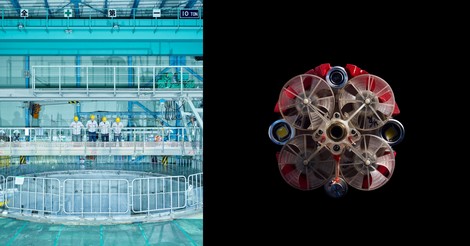Your podcast discovery platform
Curious minds select the most fascinating podcasts from around the world. Discover hand-piqd audio recommendations on your favorite topics.

piqer for: Global finds Doing Good
Michaela Haas, PhD, is the award-winning author of four non-fiction books, most recently Bouncing Forward: The Art and Science of Cultivating Resilience (Simon&Schuster). She is a member of the Solutions Journalism Network and writes a weekly solutions column for the German Süddeutsche Zeitung Magazin. Her articles have been published on CBS, the Washington Post, the Huffington Post, Daily Beast, and many other reputable media.
Can Robots Be Smart Enough To Save Us From The Ongoing Nuclear Threat Of Fukushima?
What do you do with a disaster zone like the one left behind after the Fukushima catastrophe? The 2011 earthquake and tsunami in Japan triggered a devastating catastrophe in one of the country’s largest nuclear power plants. The cleanup will take decades, and it’s urgent, because every day as much as 165 tons of groundwater seep into the reactors, becoming contaminated with radiation.
Most of us remember roughly what happened, though more than six years have passed since an earthquake and tsunami hammered northeastern Japan and reduced the Fukushima plant to radioactive ruin. In all that time, no one had been able to locate the hundreds of tons of fuel inside the three reactors that had suffered core meltdowns. The uranium fuel had overheated, turned into lava, and burned through its steel container. That much was known. What happened after that was the big question. Did all the fuel flow out of the reactors, or was some still inside? Without knowing the answers, it was nearly impossible to devise a plan to get rid of it. And getting rid of it is imperative, not only because of the ongoing contamination of groundwater. There’s always the danger of another earthquake or other disaster rupturing the reactors again, sending radiation out into the air, sea, or both.
But this is no job for humans. Nobody could enter the heart of the reactors to find the missing fuel without absorbing a lethal dose of radiation. The job would have to be done by robots. Yet no robot had ever carried out such a mission before. Many had already tried and failed. Debris tripped them up. Thick concrete walls blocked their wireless signals. Radiation fouled up their microprocessors and camera components. The area is known as a cemetery for crashed robots.
I recommend this feature because investigative reporter Vince Beiser takes us on a fascinating trip into the heart of a reactor — and the frantic efforts of scientists to build robots smart enough to outwit the challenges.
Stay up to date – with a newsletter from your channel on Doing Good.
